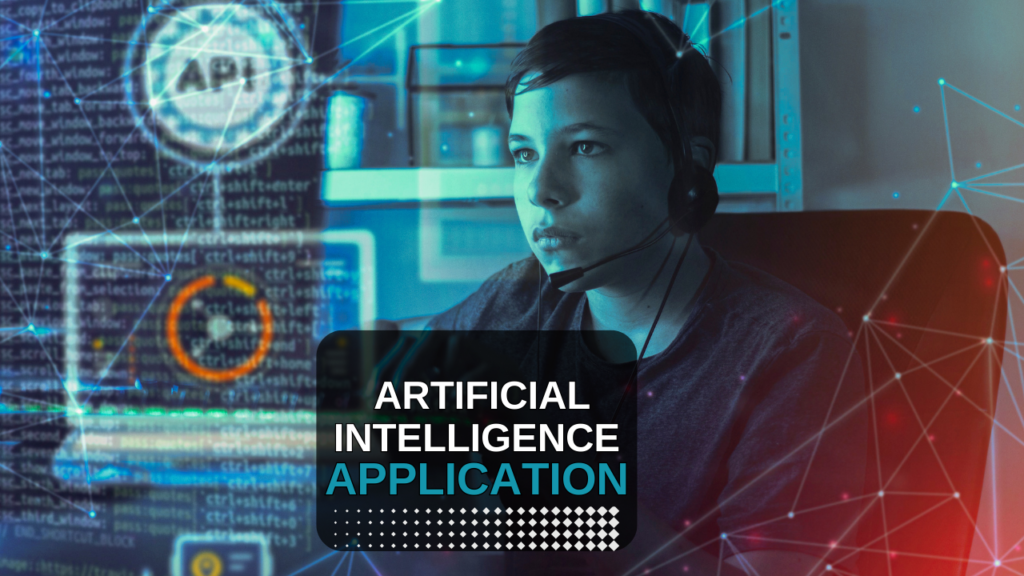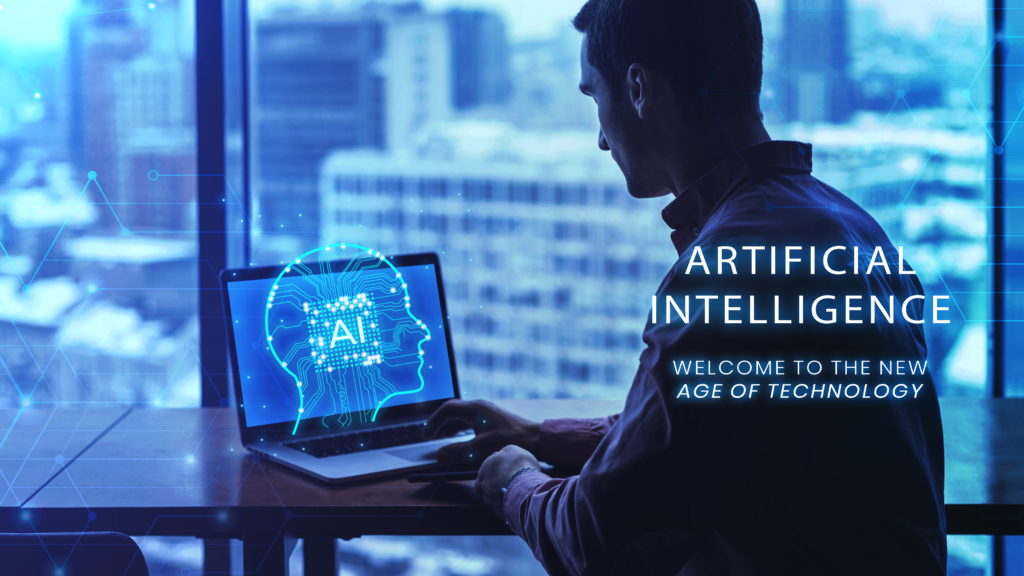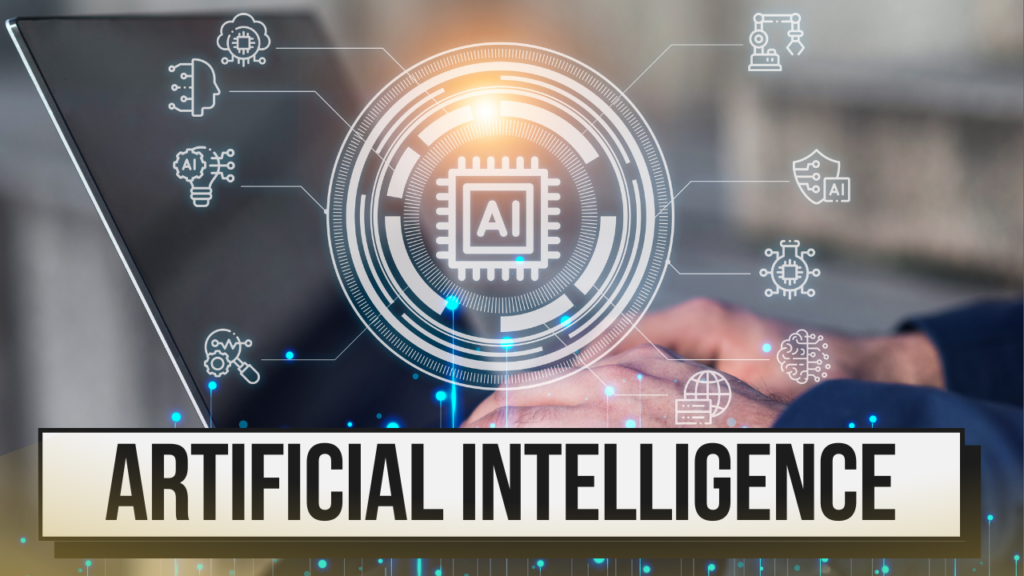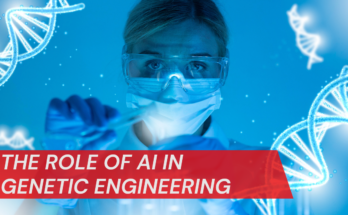History of Artificial Intelligence
While the term “artificial intelligence” has gained widespread recognition in recent times, its roots extend far back into the 1900s. The concept emerged with the introduction of robots and other machines designed to emulate human behavior. In 1949, Edmund Callus Berkeley published “Giant Brains. Or Machines That Think,” a groundbreaking book that explored the parallels between emerging computers and the intricacies of human brains. The subsequent decades witnessed increased research and investment in the development of intelligent computers.
In 1955, John McCarthy officially coined the term “artificial intelligence” during a workshop. McCarthy defined AI as “the science and engineering of making intelligent machines, especially intelligent computer programs.” He emphasized its relation to understanding human intelligence but highlighted that AI was not confined to biologically observable methods.
Since the 1950s, the field of AI has experienced significant expansion. The increasing accessibility of computers has propelled artificial intelligence into various aspects of our lives, promising to transform daily tasks, streamline workflows, and optimize computer systems. Presently, nearly every tech company incorporates AI in some capacity, contributing to the continuous advancement of AI systems.
Applications of Artificial Intelligence
Artificial intelligence has seamlessly integrated into our daily lives, influencing various aspects. Whether it’s Alexa managing our smart home devices, predictive text completing our sentences, or chatbots like Chat GPT assisting with research and user support, AI has become an integral part of our technological landscape. Across industries, AI has proven valuable with notable applications in:
- Cybersecurity: AI aids cybersecurity professionals in detecting and preventing cyber threats by analyzing network traffic, recognizing patterns, and identifying suspicious activities.
- Healthcare: In medical imaging, AI assists in analysis and diagnosis, identifying abnormalities in X-rays, MRIs, and CT scans. Additionally, AI plays a role in drug discovery, genomics research, and personalized medicine.
- Finance: Finance professionals utilize AI for fraud detection, risk assessment, and algorithmic trading. Chatbots are also employed for customer service, answering queries, and providing automated investment recommendations.
- Transportation: AI is integrated into automobiles, enhancing self-driving cars and incorporating computer vision, sensor fusion, and decision-making algorithms. It optimizes traffic flow, predicts maintenance needs, and supports supply chain management.
- Education: AI impacts global education systems by personalizing learning, facilitating adaptive tutoring systems, and creating intelligent assessment tools. It enables personalized learning paths, targets specific weaknesses, offers real-time feedback, and provides data-driven insights to teachers.

These examples only scratch the surface of AI applications, and the technology continues to advance. While AI positively transforms lives and work processes, Challenges in Artificial Intelligence and concerns emerge. Ethical considerations, privacy issues, biases, and the potential impact on job markets and society have sparked debates. As we embrace the benefits of AI, it is crucial to navigate Challenges in Artificial Intelligence responsibly and ensure that the technology contributes positively to our collective future.
Overcoming Challenges in Artificial Intelligence:
Artificial intelligence (AI) is revolutionizing our world, permeating various facets of our lives, from self-driving cars and medical diagnostics to language translation and creative expression. Its potential appears boundless, holding the promise of resolving some of humanity’s most daunting issues. However, amid its remarkable progress, AI faces formidable challenges that demand innovative solutions for us to fully tap into its true capabilities. Let’s explore the intricacies of Challenges in Artificial Intelligence and how we can overcome them.
1. Rapid Progression in AI Technological Advancements
2. Data Privacy Challenges in Artificial Intelligence
The preservation of data privacy stands as a paramount Challenges in Artificial Intelligence. At the core of AI functionality lies its dependency on copious amounts of data, a factor that amplifies concerns regarding the collection, storage, and utilization of this information. Navigating this intricate landscape necessitates striking a delicate balance—one that harnesses the formidable power of data while simultaneously upholding the fundamental rights to privacy.
The intricate Challenges in Artificial Intelligence voraciously consume and analyze substantial datasets to derive meaningful insights. The very essence of AI’s capability lies in its ability to comprehend patterns, make predictions, and optimize processes based on the information it processes. However, this prowess raises legitimate concerns about the origin, security, and ethical usage of the data involved.
Central to Challenges in Artificial Intelligence is the quest for equilibrium: a harmonious coexistence between the transformative potential of AI and the imperative to safeguard individuals’ privacy rights. The delicate nature of this balance requires careful consideration of not only the technical aspects of data handling but also the ethical dimensions surrounding privacy.
In the pursuit of leveraging data for AI advancement, it becomes crucial to establish robust frameworks that ensure the responsible and ethical handling of information. This involves implementing stringent protocols for data collection, secure storage, and transparent usage. Striking this balance demands meticulous attention to detail, with a commitment to mitigating the risks associated with potential breaches, unauthorized access, or misuse of sensitive data.
Toughest Challenges in Artificial Intelligence
| Challenge | Description | Potential Impact | Strategies for Overcoming |
|---|---|---|---|
| Data | Scarcity and bias in training data. Difficulty explaining how AI models make decisions. Data privacy and security concerns | Algorithmic bias and discriminatory outcomes Lack of trust and transparency in AI systems. Security breaches and misuse of personal data | Data augmentation techniques, synthetic data generation Focus on explainable AI (XAI) development. Robust data security measures and ethical frameworks |
| Technical | Achieving human-level intelligence and common sense. Computational limitations and energy consumption. Building robust and adaptable AI models | Limited ability to generalize and handle unexpected situations Resource-intensive training and operation. Vulnerability to adversarial attacks and changing environments | Investing in advanced algorithms and architectures. Development of energy efficient hardware and computing paradigms Continual learning and reinforcement learning techniques |
| Ethical | Potential for job displacement and economic inequality. Algorithmic bias and discrimination against certain groups. Weaponization and misuse of AI for harmful purposes | Social unrest and economic disparity. Erosion of trust in institutions and technology. Existential threats from autonomous AI systems | Establishing ethical guidelines and frameworks for AI development and deployment. Fostering public engagement and education about AI. International collaboration and regulation of AI research and applications |
| Societal | Lack of public understanding and trust in AI. Digital divide and unequal access to AI benefits Potential for negative societal impacts, such as surveillance and manipulation | Misinformed public perceptions and fear of AI. Exacerbation of existing societal inequalities. Erosion of privacy and individual autonomy | Open and transparent communication about AI Promoting digital literacy and access to AI education. Public involvement in decision. making about AI applications |
3. Addressing Bias in AI Algorithms
The presence of bias within AI algorithms stands as a pressing concern demanding urgent intervention. Challenges in Artificial Intelligence is pervasive, affecting various domains such as facial recognition systems and employment hiring processes. The ramifications of biased algorithms are profound, perpetuating and amplifying societal inequalities. Recognizing and effectively mitigating bias in AI is not just a necessity but a fundamental step towards fostering fair and equitable outcomes.
In facial recognition systems, biases can lead to inaccuracies and disparities, particularly affecting underrepresented groups. This not only raises concerns about privacy but also has potential consequences in law enforcement, where misidentifications may occur. Similarly, biased algorithms in hiring processes can reinforce existing disparities in employment opportunities, adversely affecting marginalized communities.
Acknowledging the existence of bias is the first step towards rectification. It requires a comprehensive examination of datasets used in AI training, as biases may be inadvertently embedded in these datasets. Understanding the origins and implications of bias is crucial for developing strategies to rectify and prevent its manifestation in AI algorithms.
Mitigating bias involves implementing corrective measures in algorithmic design and refining decision-making processes. This may include diversifying datasets to ensure representation across different demographics, actively involving diverse perspectives in the development process, and employing transparency measures in algorithmic decision-making.
4. Integrating Human Oversight with AI Efficiency
In the realm of technological advancements, the efficiency and automation provided by AI systems are undeniable. However, an excessive dependence on these systems carries inherent risks and potential negative consequences. The key lies in finding an equilibrium that optimally utilizes AI capabilities while ensuring the essential element of human oversight, particularly in critical decision-making scenarios and to mitigate the risk of job displacement.

The Pitfalls of Overreliance
The allure of AI efficiency lies in its ability to streamline processes and enhance productivity. Yet, an unchecked reliance on AI systems poses substantial risks. In critical decision-making, where nuanced judgment and ethical considerations come into play, the nuanced human touch is indispensable.
Importance of Human Oversight
Human oversight plays a pivotal role in providing a broader perspective that goes beyond the algorithmic capabilities of AI. Especially in situations demanding ethical discernment, empathy, and adaptability to unforeseen circumstances, human intervention becomes irreplaceable.
Critical Decision-Making Scenarios
In high-stakes situations, such as medical diagnoses or emergency responses, the integration of human oversight becomes paramount. While AI can process extensive data and identify patterns, human involvement ensures a deeper understanding of context and the ability to navigate complex ethical landscapes.
Safeguarding Against Job Displacement
Beyond critical decision-making, human oversight acts as a safeguard against the unintended consequences of job displacement. As automation increases, skilled human intervention becomes crucial for monitoring, interpreting, and contextualizing AI-generated outcomes. This not only preserves employment opportunities but also upholds accountability and ethical standards.
Strategies for Balance
Achieving the desired equilibrium involves strategic integration of AI into workflows while preserving the vital role of human oversight. Establishing clear protocols for human intervention, defining boundaries for AI applications, and fostering a culture that values both technological innovation and human expertise contribute to this delicate balance.
5. Cybersecurity Threats
Another Challenges in Artificial Intelligence is Cybersecurity threats As the tendrils of AI reach into diverse systems, the landscape of cybersecurity undergoes a significant transformation, presenting novel Challenges in Artificial Intelligence that demand vigilant attention. The infusion of AI introduces a dynamic element to the cybersecurity paradigm, posing potential risks, including the malicious exploitation of AI for activities like generating deepfakes or orchestrating sophisticated cyberattacks. Addressing these challenges requires a proactive and strategic cybersecurity approach to fortify defenses against the ever-evolving realm of emerging threats.
The Intersection of AI and Cybersecurity
The synergy between AI and cybersecurity is two-fold. On one hand, AI enhances cybersecurity measures by bolstering threat detection, analyzing patterns, and fortifying defenses. On the other hand, the integration of AI introduces vulnerabilities that malicious actors may exploit, necessitating a comprehensive strategy to stay one step ahead.
Guarding Against Exploitation
The inherent power of AI to mimic human behavior, coupled with its capacity for rapid data analysis, makes it a potent tool for cyber adversaries. This threat encompasses the creation of deceptive deepfakes, sophisticated phishing attacks, and the manipulation of AI algorithms to compromise security protocols. Proactively addressing these potential exploits is paramount in maintaining the integrity of digital ecosystems.

Proactive Cybersecurity Measures
A proactive stance in cybersecurity involves anticipating and preparing for potential threats rather than merely reacting to them. This includes continuous monitoring of AI systems, regular updates to security protocols, and the implementation of advanced threat detection mechanisms. The goal is to outpace cyber threats and neutralize potential vulnerabilities before they can be leveraged for malicious purposes.
Cyberattacks
The advent of deepfake technology, fueled by AI capabilities, poses a particular challenge. Malicious actors can exploit this technology to create realistic but fabricated content, ranging from forged identities to manipulated audio and video recordings. Combatting such threats requires advanced authentication measures, digital forensics, and a robust framework to discern genuine content from manipulated ones.
Collaboration and Information Sharing
The ever-evolving nature of cybersecurity threats necessitates collaborative efforts among industry stakeholders, government agencies, and cybersecurity experts. Sharing information about emerging threats, vulnerabilities, and best practices fosters a collective defense mechanism against malicious AI-driven exploits.
6. Limited Awareness
One of the Challenges in Artificial Intelligence is limited awareness. Despite numerous opportunities in the market where Artificial Intelligence (AI) can serve as a superior alternative to traditional systems, the primary challenge lies in the limited understanding of AI. Beyond technology enthusiasts, college students, and researchers, only a restricted number of individuals are acquainted with the potential of AI.


